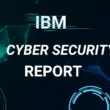Regardless of how tired we all are of discussing the pandemic, one thing is certain — it has certainly changed the world to the point of no return.
One area in which this is clearly visible is in the way we work.
What felt like a short-term social experiment in 2020 irreversibly reshaped the opportunities on the job market today.
Most companies still offer either complete or hybrid remote employment. Also, a growing number of workers prefer work-from-home arrangements to cramped cubicles and water cooler small talk.
This convenient shift, however, has created a new obstacle for organizations.
Cybersecurity has been a major challenge for companies that have adopted new systems enabling telecommuting since the pandemic’s start.
Critical vulnerability can present a lucrative opportunity for black hat hackers or easy access for threat actors looking to breach an organization to monitor activity.
How can you protect a worker’s endpoint devices as well as a company’s most valuable assets?
One solution is through layered EDR Security.
What is EDR Security?
Endpoint detection and response (also known as EDR security) is an AI-powered technology that protects both remote workers and the company from cyber threats.
It utilizes artificial intelligence to monitor the network and analyze data that has been gathered during scanning.
The model aids IT teams in getting a clearer idea of what has to be improved within the system — in other words, to get a sense of its weak or already compromised points.
Based on the provided information, analysts can automate security responses in a way that makes sense for the context of the company.
Distinguishing EDR And Antivirus:
Unlike traditional antivirus relying on signature-based detection, EDR employs advanced techniques such as behavior analysis, machine learning, and threat intelligence. These mechanisms enable EDR to detect and prevent both known and unknown threats, making it a potent ally for organizations aiming to outpace cyber adversaries.
Key EDR Capabilities:
Comprehensive Endpoint Visibility:
EDR excels in providing a holistic view of endpoint activities. By collecting and analyzing data on various events like process execution, file changes, network connections, and user behavior, EDR identifies anomalies or suspicious activities, offering organizations unparalleled insight into potential threats.
Advanced Threat Hunting:
Equipped with advanced threat hunting capabilities, EDR allows security teams to search for indicators of compromise (IOCs) and swiftly investigate potential security incidents. This proactive approach enables organizations to identify and neutralize threats at an early stage, minimizing the impact on their operations.
Real-time Incident Response:
A distinctive feature of EDR lies in its ability to respond to security incidents in real-time. Upon detecting a threat, EDR can automatically trigger response actions, such as isolating compromised endpoints, blocking malicious processes, or alerting security personnel. This rapid response minimizes the impact of security incidents and prevents further compromise.
The Vital Role of EDR in Cybersecurity:
As cyber threats evolve in sophistication, organizations face an increasing risk of becoming targets. Embracing advanced security solutions like EDR becomes indispensable. Traditional antivirus solutions, while once effective, now fall short in safeguarding against the dynamic threat landscape.
Benefits of Implementing EDR:
Enhanced Threat Detection:
By analyzing endpoint data in real-time, EDR identifies threats that may elude traditional antivirus solutions. This early detection capability allows organizations to thwart threats before they cause significant damage.
Improved Incident Response:
EDR’s automatic triggering of response actions streamlines incident response, reducing the time it takes to mitigate threats and return to normal operations.
Advanced Analytics and Reporting:
Many EDR solutions come with sophisticated analytics and reporting capabilities, providing organizations with valuable insights into their security posture and enabling informed decision-making to strengthen defenses.
Real-world Effectiveness: Case Studies:
Case Study 1: Medium-sized Financial Institution (Company X)
Company X successfully mitigated a ransomware attack by swiftly isolating the infected endpoint using EDR. Threat hunting capabilities allowed them to investigate and contain the attack, preventing further compromise.
Case Study 2: Large E-commerce Retailer (Company Y)
Company Y averted a data breach by detecting and blocking attackers exploiting a vulnerability. EDR alerted the security team, enabling them to patch the vulnerability and protect sensitive information.
Choosing the Right EDR Solution:
When selecting an EDR solution, evaluate features, scalability, and compatibility. Consider the vendor’s reputation and track record, seeking reliable solutions that align with your organization’s needs and infrastructure.
Stronger Security Guards Endpoint Devices
Businesses that implement EDR Security have more reliable, thorough, and comprehensive security because it:
Gives a bird’s-eye view of the attack surface to analysts from a single dashboard
- Monitors the activity within the network 24/7
- Automates responses based on the pre-set rules
- Adopts a proactive instead of a reactive approach
Let’s break down how these four features translate into stronger security and how they aid analysts on the job.
A Comprehensive Overview of Security Posture
Analysts get around 1000 alerts every day. An overwhelmingly large number in itself.
What’s more, these notifications come from multiple unrelated cybersecurity tools companies use to manage security.
EDR Security provides a centralized system to which the tool reports the latest findings following monitoring and data analytics.
For IT teams, this means they have one console from which they can overview the cyber state of all endpoint devices connected to the company’s infrastructure.
Continual Monitoring of the Security
Automation enables non-stop monitoring of security.
While the tool scans the attack surface, it also collects data about the way the users behave to compare it and identify suspicious movements within the infrastructure.
Constant monitoring of the system aids analysts. It gives them data based on which they can make fast and informed decisions on how to react to possible threats as well as strengthen security.
The financial damage to the compromised organization increases with the longer time the hackers have access to the system, or the network has flaws that can be exploited.
Applying a Proactive Approach to Security
Compared to other tools, EDR Security doesn’t stop at simple detection of threats and response.
It proactively aids your security teams in improving the security posture based on the latest findings within the network.
Continual monitoring of the security in the context of the company provides teams with invaluable information on whether there are signs of infection that are already in one of the endpoint devices.
With larger businesses that have multiple employees, it’s impossible to control the security of all devices they use to connect to the network.
EDR Security continually monitors the security posture and attack surface to identify unwanted activity early — before it causes a major incident for the company.
Automated Security Responses
Whether a threat represents a risk is going to depend on the context of a company. Each organization has a unique infrastructure, a set of tools it needs to operate as well as different people who use it for work.
EDR Security takes that into consideration and enables analysts to automate responses based on the specific needs — context of the company.
This feature takes a lot of the legwork out from teams that already struggle with a heavy workload and an overwhelming number of alerts they need to respond to.
For instance, the responses that can be automated include malware detection and removal after a successful phishing attack that targeted one of the remote employees.
Automated remediation can apply to problems and vulnerabilities that are already known to target similar networks or that have already been aimed at your network.
That frees up time for cybersecurity analysts to focus on the advanced threats — high-risk incidents behind which are real people and not automated tools that target multiple companies at once.
That is to say; they can dedicate their time to hacking threats that automated tools can’t detect or mitigate once they find their way into the system.
Protecting People Within the Company
Ultimately, proper cybersecurity tools aid people who use a company’s services and who work (both remotely and on-premises) the most.
Remote employees that connect to work devices assume that their data and devices are safe but also that they’re connecting to a protected infrastructure.
With layered and comprehensive EDR Security, any flaws and unwanted access are mitigated early — before they escalate into damaging incidents such as successful data breaches or ransomware.
With the rate it’s gaining momentum now, it’s safe to say that two things are sure for telecommuting:
- It’s going to shape-shift in the next few years
- It’s not going anywhere anytime soon
Therefore, comprehensive and thorough security protects the workers and the enterprise as well as the future of remote work.











